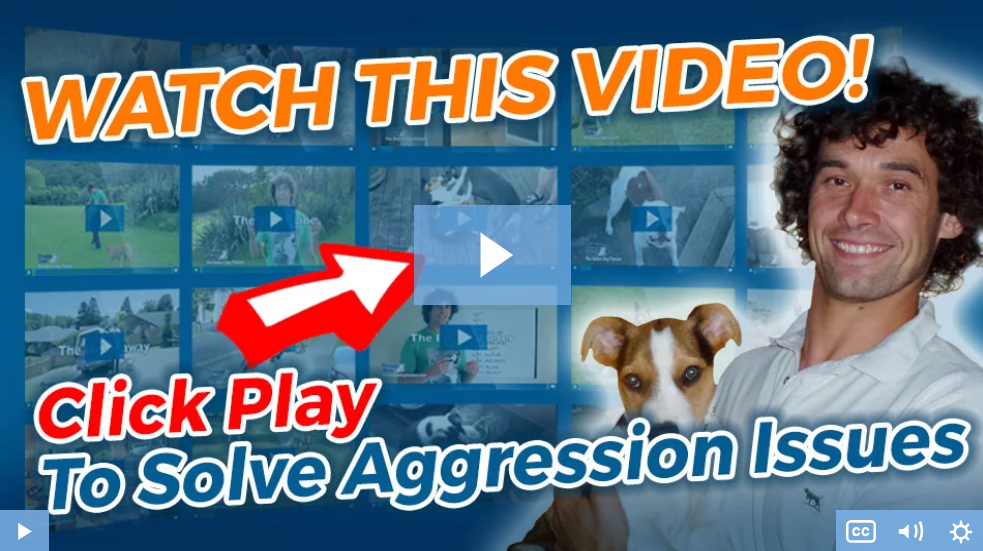If you’re wondering how to spot aggressive puppy signs in your little bundle of fluff then you’re not the only one.
Puppies might be cute and cuddly the majority of the time, but what do you do when you’re constantly on the receiving end of an out-of-control pup.
Do you punish your pup?
…Send them back to the pet store?
…Or do you simply bury your head in the sand and hope the problem goes away?
In a word… No!
See even though puppies can be it little temperamental at times, you can get your pups’ aggression under control with the right plan of action.
To get the ball rolling, go ahead and take a few minutes to check out the Dog Calming Code from Dan Abdelnoor over at The Online Dog Trainer. (see video below)
Just to give you a little insight, this is a program that’s designed to quickly stop the aggressive tendencies in ANY dog or puppy. But more importantly, it’s going to set the foundation for your puppy to see YOU as the pack leader… a key element in stopping unwanted behavior for many years to come.
Here’s the link to take a look: Click Here To Check Out The Dog Calming Code And Discover How To Finally Stop Your Puppy’s Unwanted Aggression… Even If you’ve Tried & Failed Before!
(video will open in new window)
Puppy aggression is often misinterpreted, thereby causing distress to pet owners.
You could have a genuine reason to worry, or your concerns could be unfounded.
Luckily, we have collaborated with vets and behavior experts to help understand issues involving aggression in puppies.
Your puppy’s behavior can be normal puppy play as it grows and learns, or it can be a sign of aggressive behavior.
In this post, we will outline the causes of puppy aggression, ways of recognizing aggression, and how to address such behavior.
What can cause puppy aggression?
Puppies can be aggressive for lots of reasons and there are multiple types of aggression that have been observed over time.
Your puppy may show aggression in response to pain or fear, or it could also be a way of communicating conflict or threat.
So if your puppy exhibits aggressive behavior due to such factors as fear, food and objecting guarding, then this could be an issue.
Some puppies can also exhibit idiopathic biological aggression linked to no particular issue.
Is my puppy aggressive?
Owners often misinterpret normal puppy play for genuine aggression, but there are ways of making a distinction between the two.
For instance, behavior that could be considered typical puppy play includes snarling, growling and biting.
And if you’re still unsure then the following factors should help you determine whether or not your puppy is aggressive…
Play-bowing and tail-wagging
If your puppy puts their forearms on the floor with their rump high in the air, and with their tail wagging, this is an indication of normal puppy play rather than aggression.
Leaping and pouncing
If your puppy leaps and pounces onto their target, that is also a sign of normal play.
Reciprocity
When puppies are playing, they usually alternate back and forth from activity to passiveness.
If your puppy exhibits only aggression when playing, then this could be a sign of puppy aggression.
If they stop with the barking and mild biting when you stop playing, this is an indication that your puppy is not aggressive.
If however, your puppy continues to actively pursue you while you are walking away, that could be an indication of aggression.
Loud Noises
Does your puppy back off when you startle them by raising your voice or clapping your hands?
If yes, then they are probably not aggressive.
But if they continue to be confrontational, then they could have aggression issues.
Teething issues
When puppies are teething, their chewing desire is usually heightened.
So if you notice that your puppy is content with chewing on teething toys rather than biting at your hands or feet, they might be just teething, and not aggressive.
However, if they are not content, it is an indication of puppy aggression.
Signs of fear or pain
If your puppy is in some kind of pain or is afraid of something, they are likely to become aggressive.
Signs of fear in puppies include pinned back ears, tucked tail and darting eyes.
Also, if your puppy slinks while placing their whole body close to the ground, then it’s very possible they might be afraid of something.
If you still can’t tell whether your puppy is aggressive or just playing, you may want to consult your vet or a behavior expert. Or better still, check out The Dog Calming Code for guidance on whether there should be anything to be concerned about.
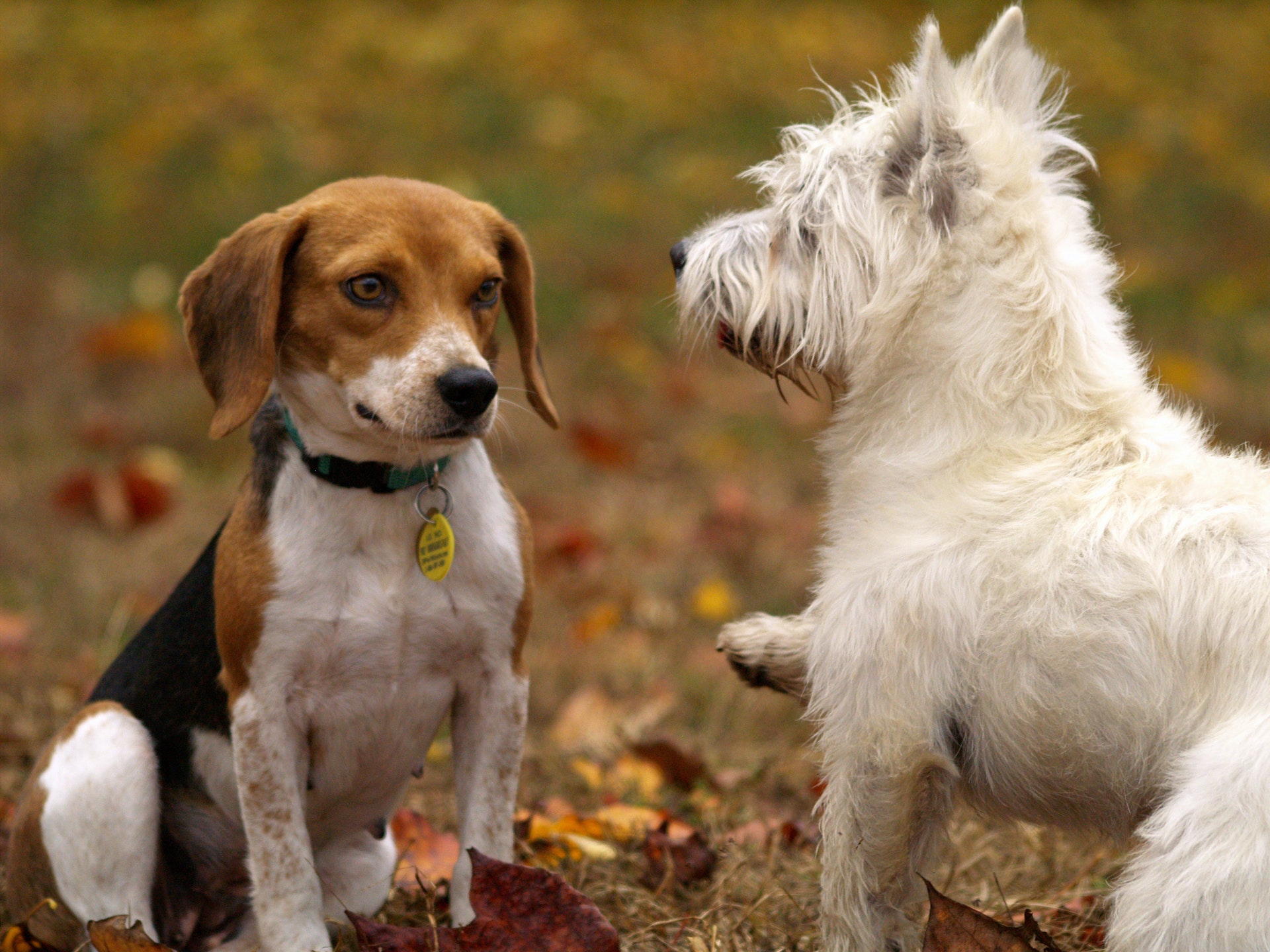
Aggressive Puppy Signs
Your puppy could have aggression if they do the following…
- Keeps jumping on your legs
- Constantly snarls or growls
- Snaps their jaws with their head up as if trying to bite you
- Constantly barks at you
- Bites your hands regularly when you try to pet or snuggle them
- Bites your feet when you walk away
As you might have noticed, aggressive puppy signs are quite similar to typical puppy play. So signs of any of the above will help you distinguish between the two.
How to stop puppy aggression
Now there are two ways to eliminate your puppy’s aggressive behavior.
- The first involves managing the situations that cause your puppy to become aggressive
- And the second method is to train your puppy for polite play and attention-seeking
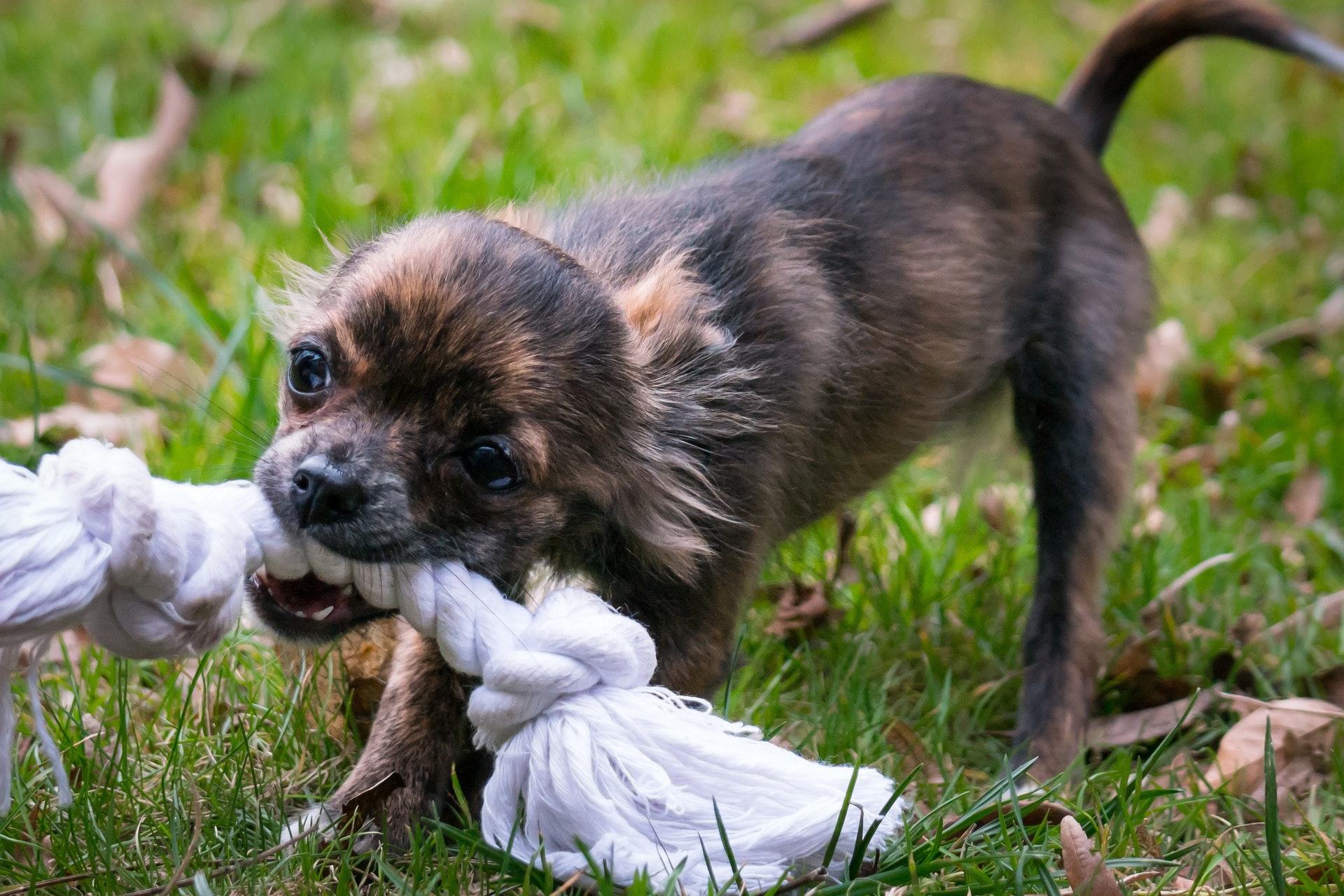
Preventing Your Puppy biting
Puppies love chewing and biting. It is their nature.
However, puppies have sharp teeth that can actually hurt you if the puppy bites hard enough.
If your puppy bites you to the extent that your skin changes color or you bleed, you need to put an immediate stop this behavior.
This can be achieved by physically preventing your puppy from biting.
Prevention is suitable when your puppy is overexcited or in a situation where you can’t train them.
Prevention is also appropriate when your pup is a bother to people or other dogs.
Consider taking the following measures to manage such aggressive biting and other undesired puppy behaviors.
Dog Calming Code: Click Here To Discover How To Finally Stop Your Puppy’s Unwanted Aggression… Even If You’ve Tried & Failed Before!
Manage the environment
You can manage aggressive puppy biting by managing the environment your pup is in.
When you engage your puppy in rough play, they can often become emotionally charged.
This elevated energy level is all that’s needed to trigger aggression.
So it’s important to keep a close watch and end the game every time you realize that the puppy play has become too rough.
This will give your puppy some time to relax.
You may also interrupt puppy aggression by walking away from your pup, or taking them to their resting area away from others.
Redirection
Aggressive puppy biting can also be contained by interrupting and redirecting their attention to a chew toy every time they bite your hand when you are playing with or petting them.
During a play session, you may put your pup on a long leash such that when they start being aggressive, you can restrict them by keeping control of the leash or gently pulling the puppy away from people or other dogs.
Dealing With Children
When children are playing, they tend to be loud and make lots of movement.
Such triggers can often cause excitement in pups.
You can teach the kids to play calmly to avoid triggering the puppy’s aggression.
Also, consider stopping the play when it gets exceedingly rough until you figure out a better solution.
If your pup keeps on tugging on your clothes or biting at your ankles, you may keep them on a leash to contain the situation.
This way, you can use the leash to redirect their attention elsewhere every time they become aggressive.
Your puppy can learn how to play without getting aggressive by playing with other non-aggressive dogs.
Yes, dogs can be good teachers to fellow dogs.
Take your puppy to places where they can play and socialize with other dogs.
Consider taking the puppy to dog parks or daycare.
This way, they will have an opportunity to have supervised socialization that can shape their behavior.
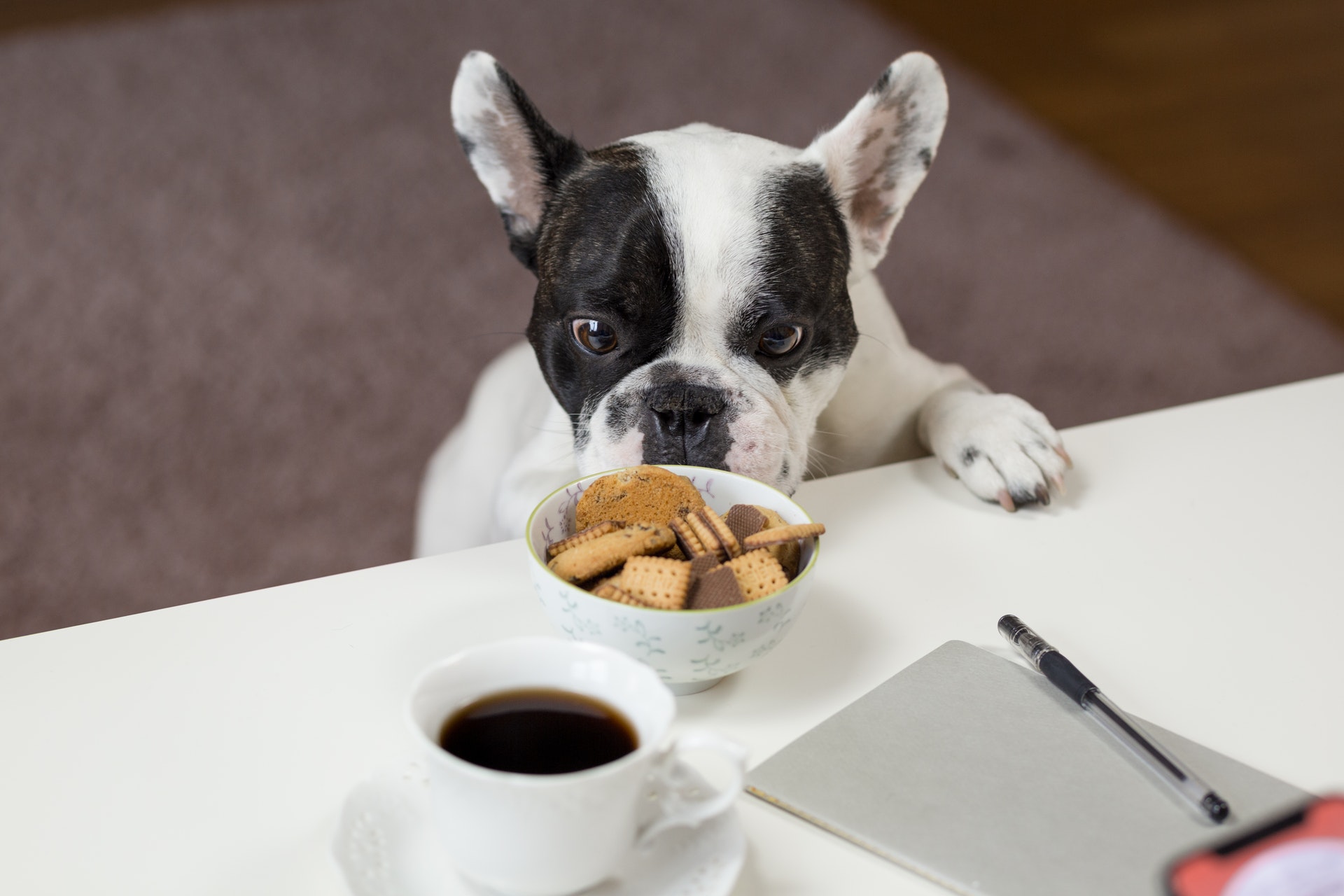
Training an aggressive puppy
The following puppy training tips can help break the cycle of aggression…
#1 – Event markers
For this to work, you need an event marker that informs your pup that you liked the behavior they just exhibited.
The event marker should be a distinct sound, such as the word “YES”.
Give your puppy a treat for good behavior immediately after the event marker. If the pup doesn’t conform to good behavior, there will be no event marker and no treat.
Put your hand out to the puppy. If they nip your hand in any way, withdraw your hand and say nothing.
If your puppy doesn’t attempt to bite your hand, say YES (or use your chosen event marker), and give them a treat.
If your puppy is very aggressive, it will take some time to shape good behavior.
And for best results, it’s always important to train them when they are as calm as possible
Over time, when their behavior improves, you can continue implementing the same training when your puppy is more playful and excited.
The purpose of this is to teach your puppy not to bite hard. If they just mouth or bite gently, that’s fine, but just be sure to set the boundaries of what is, and isn’t ok.
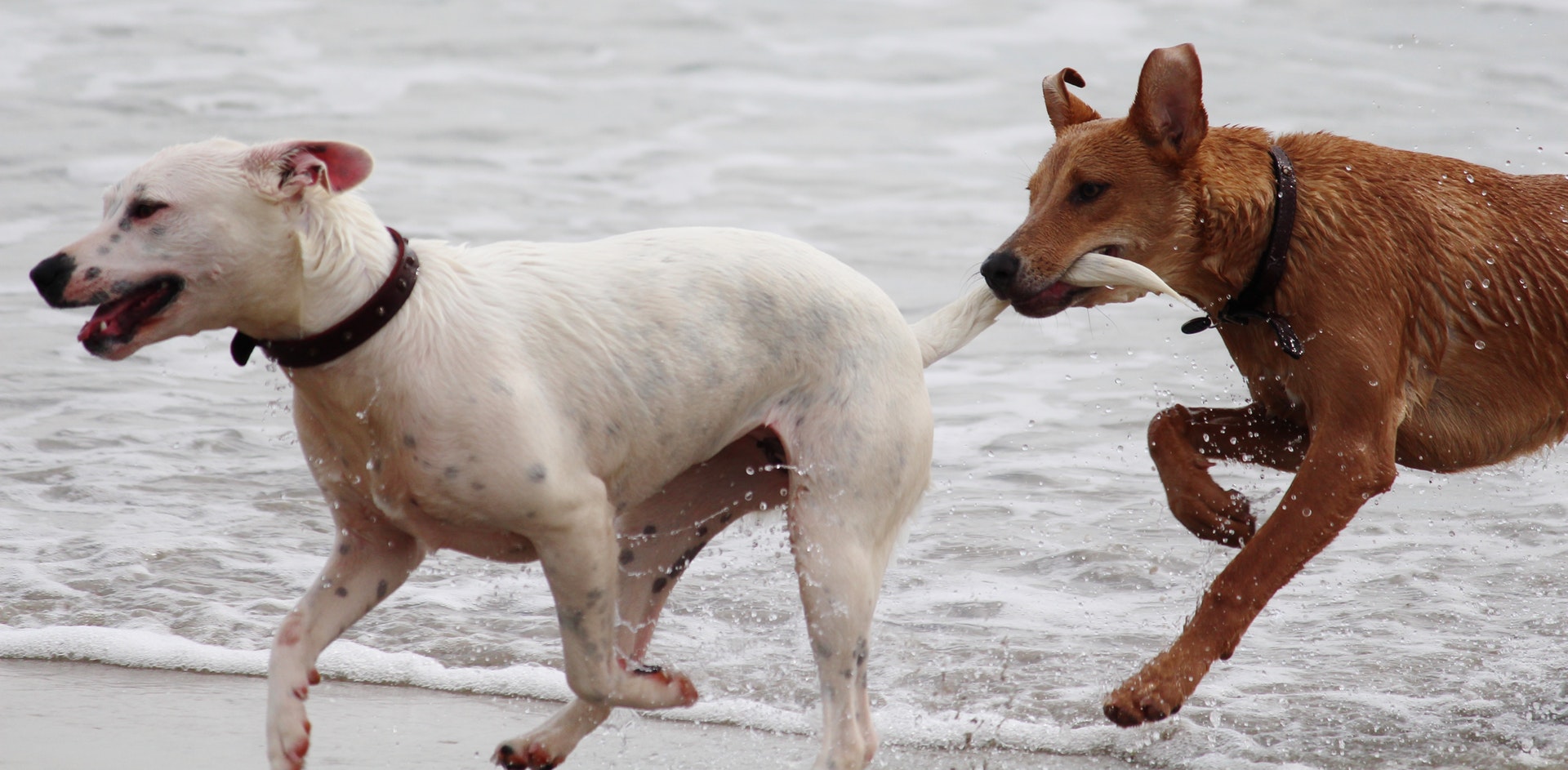
#2 – Bite inhibition
Bite inhibition is knowing when a bite is too intense such that it is not desired for play.
Some experts advise that you should allow your puppy to mouth or bite gently for some time before you prevent them from biting altogether.
This trains your puppy to have control over their mouth.
Older puppies ( 5-6 months old) that still bite can be disastrous to people and to other dogs.
They have learned that their behavior earns them attention and continue to bite because they’re ultimately looking for a reaction, such as a push or a shove, which they enjoy.
If this is the case then you need to take things one step further and stop all physical play with people.
If your older puppy bites hard at your hands, you might need to put him on a leash, as this will give you control over your puppy without handling them.
#3 – Teach your pup to “leave it.”
“Leave it” is a command used when you want your pup to stop an undesired act.
It is a popular dog command among dog owners as it allows you to tell your puppy to stop doing something without the use of force or intimidation.
Start by placing a treat under your shoe’s toecap so that your pup can sniff, lick and paw around your shoe but can’t snatch the treat. Let the puppy try to get the treat until it gives up.
Immediately they turn away from the treat, sound the event marker and treat the pup from your hand.
Make sure the treat you give them is different from what is under your shoe.
Repeat this 5 times.
From there, enhance your cue. Say a firm “Leave it” when the pup first notices the treat placed under your toe cap.
Immediately treat them from your hand when they stop pursuing the treat under your toe and turn away.
And again, repeat this process 5 times.
Then, put a treat on the ground and divert your puppy’s attention towards it.
Remember to keep your foot close to the treat and follow up immediately by saying “leave it” firmly.
If they go for the treat, smash it with your toe before they get it.
If they leave the treat, reward him with a different treat from your hand.
You could even take this one step further by dropping a treat to the floor or even rolling a treat across the floor.
Again following up with a firm “leave it”
Final Thoughts
It is crucial for every pup owner to be on the lookout for aggressive puppy signs.
Doing this will put you in a position where you can either physically stop your puppy from being aggressive, or you can train them not to be aggressive.
But recognizing aggressive puppy signs is the first step to success.
And in time and with the right training, you’ll be able to work towards a better, less aggressive relationship with your puppy.
Dog Calming Code: Click Here To Discover How To Finally Stop Your Puppy’s Unwanted Aggression… Even If You’ve Tried & Failed Before!
Do you know any other way to spot aggressive puppy signs? Let me know in the comments below…

